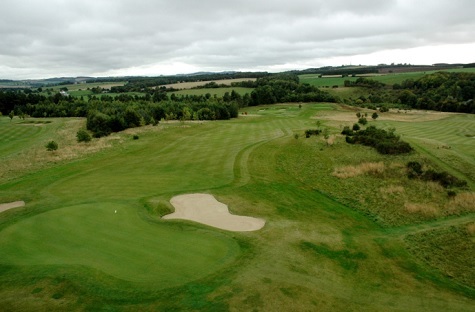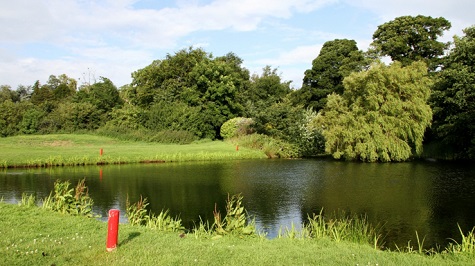Having covered most of the other sports in recent blogs, this week I would like to turn my attention to the work being carried out on golf courses at this time of the year. Once the summer is over, greenkeepers will be turning their attention to what lies ahead in terms of winter projects.
Depending on the extent of work required, any major reconstruction work projects will have already been planned or are already ongoing to fit in with the weather and timing of operations. I am talking generally about the regular ongoing winter works such as green and tee renovations, tree works and winter ditch, pond and bunker works that usually start after September when all the clubs’ main tournaments have concluded.

September is a time when greenkeepers will be looking to use some preventative fungicide treatments to ensure disease is kept under control - using systemic fungicides whilst temperatures remain high and contact fungicides when the temperatures become cooler towards the end of the month.
With the main growing season coming to a close, many course managers/greenkeepers will be undertaking end of season renovations on tees and greens. This usually sees a programme of works that encompasses scarification, aeration, topdressing, overseeding and fertilising.

Restoring levels and overseeding tees and greens will be beneficial whilst soil and air temperatures remain favourable during the month. Regular maintenance regimes will be ongoing, ensuring the course is kept playable during these important renovations.
In addition to end of season renovations, course managers/head greenkeepers should now, if they have not already done so, plan their winter works programme - clearing out ponds and ditches, bunker replacement /repairs, path repairs and, of course, any new construction works.
The weather will be an important element when carrying out end of season renovations; planning and timing of operations are critical. You do not want to be topdressing when inclement weather is about (during rain showers) because, once the topdressing gets wet, it becomes very difficult to spread and brush in. You must work with the weather. Putting on too much dressing in one go will smother the turf. Keep jobs in proportion and keep an eye on weather forecasts.
If you do decide to use external contractors to carry out your renovations, ensure you have checked their credentials and obtained references that they have the relevant skills, experience and machinery to do the job.

The earlier you can get on with your renovations the better (mid-September through to mid-October are usually optimal times for renovations). It is important to make good use of the warm soil and air temperatures that will aid seed germination.
Choice of machinery is vital for successful renovations; ensure that scarifiers and aerators are fit for purpose and that the blades and tines are sharp, clean and of correct length. Also, check that they are safe to use and have the appropriate guards fitted.
There are many different makes and models of machines available, all of which offer different techniques or modes of action. Some scarifiers are more aggressive than others.
It is important to ensure you use compatible topdressing materials. Changing materials can often have disastrous results. Layering of different materials can cause root breaks and interfere with the hydraulic movement of water through the soil profile.
Seed should be used from approved suppliers and be certified. The use of old seed (more than twelve months old) may decrease its germination rates.
I myself was a greenkeeper at two golf courses and particularly enjoyed the winter months, getting stuck into our winter projects. In my day these were re-turfing tees, remodelling bunkers, ditch and pond clearance and tree planting.
These jobs gave one plenty of satisfaction and the work achieved was beneficial for the progress of the course.
Planting trees, I generally always enjoyed. The fact is, you are planting a living plant that will be part of the course for years to come and bring with it many beneficial values.

Trees are vital. As the biggest plants on the planet, they give us oxygen, store carbon, stabilise the soil and give life to the world’s wildlife. They also provide us with the materials for tools and shelter.
Not only are trees essential for life, but as the longest living species on earth, they give us a link between the past, present and future. It’s critical that woodlands, rainforests and trees in urban settings, such as parks and golf courses are preserved and sustainably managed across the world.
You can learn more about trees here.
Finally, one of the most important jobs during the wither period is the winter machinery servicing, therefore it time to arrange for this work to be done. Whether you do some of the work yourselves or contract it out to your machinery supplier.
It is important to have your machinery serviced, thus ensuring it is ready for the onslaught of a new season.